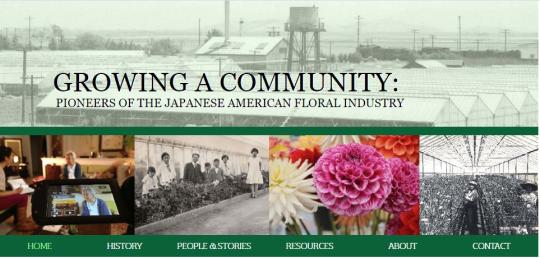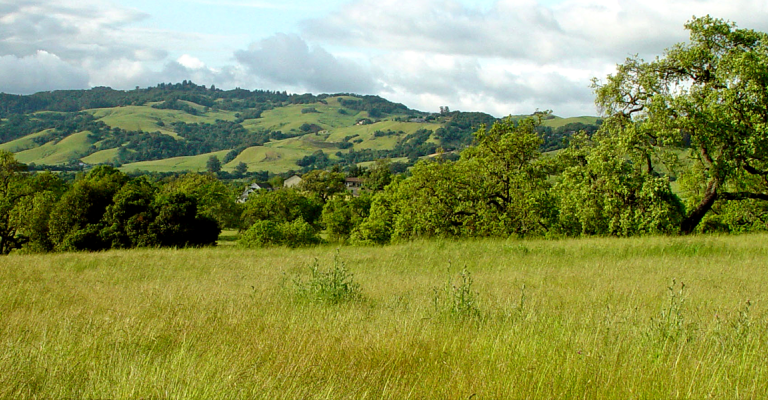Interpretive Products
Interpretive Websites
Bay Area Japanese Flower Growers
In 2013, ASC was awarded a Cal Humanities Community Stories grant to collect oral histories of Japanese flower-growing families in Oakland and surrounding cities. This project researched, documented, and shared the story of the Bay Area's Japanese flower growers, capturing the origins of the Japanese floral industry in the East Bay, the Japanese influence on the industry, and the individual experiences of Japanese-American flower growers.

ASC oral historian Dana Ogo Shew and audio-video specialist Benjamin Sue video-recorded the oral histories of nineteen former and current flower growers and descendants, as well as the Executive Vice President of the California Flower Market. The project created a website "Growing a Community: Pioneers of the Japanese American Floral Industry" featuring oral history clips, an interactive map of Japanese nurseries, and the history of the Japanese American floral industry.
Past projects include a co-operative project with the California Department of Transportation to create Archaeology in San Francisco, California—an interpretive website about the archaeology of 19th century San Francisco based on our excavations and historical research.
The Topaz Toddler Art Project
This online exhibit showcases the art, stories, and history of the young preschoolers who were incarcerated at Utah’s WWII Japanese American incarceration camp, Topaz. Despite the challenging circumstances of their unjust imprisonment, these toddlers experienced preschool life much like any other American child of the time. Taught by dedicated and compassionate Japanese American teachers, these young children napped, snacked, played, created art, learned, and grew in the safety of their preschool environment.

Museum Displays
Twentynine Palms Exhibit
The Archaeology and Paleontology Curation Center at the Marine Corps Air Ground Combat Center in Twentynine Palms partnered with ASC to transform its museum space. Over several years—despite pauses and delays due to the pandemic—the ASC team completely reimagined the exhibits, introducing vibrant new colors, interactive displays, a touchscreen experience, and a broader selection of archaeological and paleontological objects. These enhancements bring to life the rich history of the Mojave Desert’s people, plants, animals, and geology. While the exhibit is only accessible to residents and visitors of the Marine Corps Combat Center, you can explore it online through a virtual tour led by Ashlee Whitmire, Archaeologist Curator and Collections Specialist. Check it out here:
Amache Digitization Project
Dana Shew and Adrian Praetzellis were awarded a Common Heritage grant from the National Endowment for the Humanities in support of the Amache Digitization Project. The project focuses on digitizing photographs, objects, documents, and memories to preserve and share the experiences of World War II Japanese American internment at Colorado’s internment camp, Amache.

Dana organized an exhibit at the Sonoma State Library Art Gallery, “Creativity Unconfined: Life in a WWII Japanese American Internment Camp,” to highlight the objects that were discovered during the project’s digitization phase, and explored creativity and art in Colorado’s WWII Japanese American incarceration camp. It was open to the public during Fall 2016. The well-attended opening reception featured presentations that included Amache descendants as well as Sonoma State University President Dr. Judy Sakaki.
Inspired by the Amache exihibit, Dr. Sakaki asked the ASC to curate an exhibit that would explore and highlight her family’s internment experience. Dana expanded President Sakaki’s vision and created an exhibit that examined the people and events that have influenced Judy’s life, beginning with her grandparents’ immigration to the United States and ending with her vision for the future of SSU. The exhibit, entitled “I Am Because…,” opened in time for Dr. Sakaki’s investiture ceremony in April 2017 and was on display through 15 December 2017.


